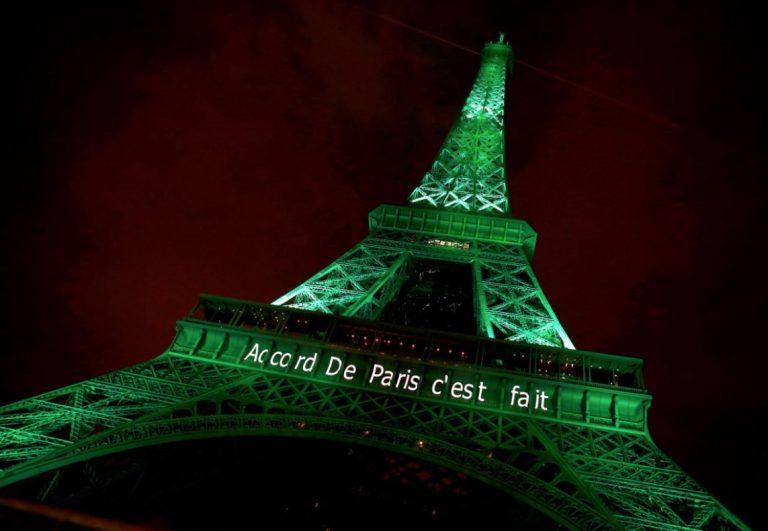
In 2015, countries around the world held the 21st Conference of the Parties to the United Nations Framework Convention on Climate Change (UNFCCC) in Paris and unanimously agreed to limit global temperature rise to well below 2 degrees Celsius by 2100. We now have global emissions data eight years after the “landmark” Paris Agreement. [emphasis, links added]
Today, I assess the impact of the Paris Agreement on decarbonization by comparing decarbonization rates in the eight years before and eight years after the Agreement (for the top 20 emitters and the world as a whole).
The assessment aims to identify an acceleration in the rate of decarbonization (i.e. a reduction in the ratio of CO2 emissions to GDP).
This acceleration is necessary if the world is to meet ambitious global emissions targets consistent with the Paris Agreement temperature targets.
Let's start with the most important number – 8.1%.
This is the annual global decarbonization rate required to reduce global CO2 emissions by 80% by 2050assuming that the annual global GDP growth rate is 2.5%.
Next, let's look at the global decarbonization rate before and after the Paris Conference and the top 20 carbon dioxide emitters in 2023, which together account for about 81% of global emissions in 2023.
The table below ranks countries by their post-Paris agreement decarbonization rates.

Some conclusions can be drawn from this analysis:
- Global decarbonization remains largely unchanged from eight years before Paris to eight years after;
- The global decarbonization rate is about 2%, which is still far from the 8.1% target implied by the Paris Agreement.almost a quarter of the time between 2015 and 2050 is in the rearview mirror (8 out of 35 years);
- No country in the top 20 emitters is approaching the annual decarbonization rate of 8.1% set by the Paris Agreement. Please note, The proportion of the world that fails to meet decarbonization rate requirements increases by 8.1% year by year.
The table below presents the same data arranged by the annual rate of change in decarbonization rates from pre-Paris to post-Paris.

Some key points:
- surprise! Topping the list is the United Arab Emirates, which hosts the 2023 Conference of the Parties to the United Nations Framework Convention on Climate Change and has been criticized for its fossil fuel production (note that the United States produces approximately 5 times more oil than the UAE). However, In the eight years since the Paris Summit, none of the top 20 emitters has improved its decarbonization rate more than the UAE.
- After the Paris Agreement, 14 of the top 20 emitters (green) have increased their decarbonization rates, while 6 have not (red).
- However, these 14 improvers account for 39.2% of global CO2 emissions in 2023, while the six countries that are slowing decarbonization account for 41.4% of global emissions. This explains why Overall global decarbonization rates remain broadly unchanged. In particular, China’s decarbonization rate has slowed significantly.
- The United States has seen essentially no change, being outmaneuvered not just by the UAE but also by Saudi Arabia and Iran.
- The only major emitters (accounting for more than 2% of global emissions) in the top 10 for improved decarbonization rates are Japan and India.
Bottom line: at the global level, Decarbonization data from 2006 to 2023 shows that the Paris Agreement has had no global impact.
At the national level, There is evidence that decarbonization is accelerating in 14 countries, but is still far from the pace needed to meet the goals of the Paris Agreement.
This analysis cannot assess the reasons for changes in decarbonization rates across countries – future analyzes will seek to understand why decarbonization rates change over time and to what extent decarbonization rates are affected by policy.
The Honest Broker is written by climate expert Roger Pielke Jr and is reader-supported. If you value what you read here, please consider subscribing and supporting the work.
Roger Pielke Jr. has been a professor at the University of Colorado since 2001. He holds degrees in mathematics, public policy, and political science, and is author of many books. (Amazon).
Read more at Honest Brokers
